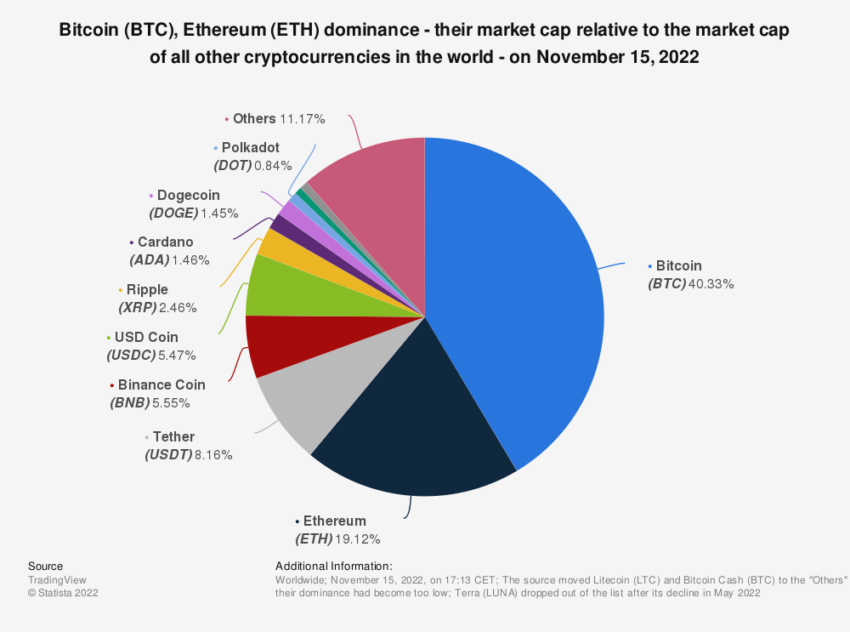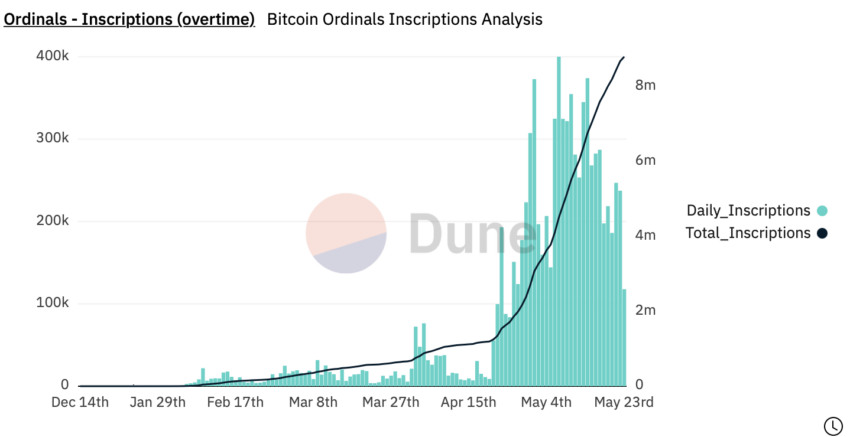
Will Bitcoin “kill” Ethereum? Bitcoin has been honing its technological prowess with the advent of BRC-20 token standards following the Taproot upgrade. The BRC-20 token standard is a pivotal development enabling the creation of fungible assets on the Bitcoin blockchain, aiming to replace the popular Ethereum ERC-20 token standard. However, BRC-20 tokens face challenges like the lack of support for smart contracts and non-fungible tokens (NFTs), which are integral to the Ethereum blockchain.
The Taproot upgrade, a recent development on the Bitcoin blockchain, offers significant improvements to Bitcoin’s privacy and smart contract features. Despite the BRC-20 token’s limitations, the Taproot upgrade exhibits promise for Bitcoin’s potential to support smart contracts.
Bitcoin vs. Ethereum: What Is the Difference?
Bitcoin and Ethereum are the leading players in the cryptocurrency market, each with unique features and capabilities.
Ethereum, the second-largest cryptocurrency network, is more than a digital currency. It is a comprehensive blockchain ecosystem with its native currency, Ether.
In addition to serving as a medium of exchange, Ethereum’s purpose extends to enabling the development of decentralized applications (dApps) and the creation of NFTs. Despite these advanced features, Ethereum has not gone without its criticisms, particularly in comparison to Bitcoin’s intended purpose and structure.

On the other hand, Bitcoin has held its position as the world’s first and largest digital currency since 2009. It has maintained its supremacy, not because of an array of advanced features but because of its simplicity and promise of being a superior form of money.
With a limited supply of 21 million coins, Bitcoin has set itself apart as a valuable digital asset. Consequently, this starkly contrasts the inflation-prone nature of traditional fiat currencies.
Decentralization and Blockchain Technology
Despite their differences, Bitcoin and Ethereum share common traits: decentralization, cryptographic encryption, open-source software, and native currencies.
Both cryptos operate on their own blockchains, enabling the creation of wallets for users to store coins and complete transactions. They rely on a global network of computer nodes to add and verify transactions, ensuring system integrity.
However, beyond these similarities, the functionalities and utility cases of Bitcoin and Ethereum diverge. Bitcoin was created as a superior form of money, while Ethereum’s more complex capabilities, such as tokens and smart contracts, set it apart.
Some argue that these additional features of Ethereum compromise the blockchain’s integrity. But, with Bitcoin’s recent advances like BRC-20 tokens and the Taproot upgrade, Bitcoin might be stepping into Ethereum’s territory.
Bitcoin Ordinals and the Bitcoin Virtual Machine
Bitcoin’s evolution did not stop with the introduction of BRC-20 tokens. Two key developments stand out in the quest to further enhance the blockchain’s capabilities: Bitcoin Ordinals and the Bitcoin Virtual Machine.
Bitcoin Ordinals, a unique addition to the Bitcoin blockchain, enhanced the fungibility of its tokens. The Bitcoin Virtual Machine (BVM) introduction promises to mark a significant shift in Bitcoin’s functionality, enabling an environment similar to Ethereum’s EVM.

This leap allowed for the introduction of smart contract functionality on the Bitcoin blockchain, thus expanding its potential use cases. However, it is important to note that the full capabilities of this system are yet to be fully realized.
Despite this progress, it is crucial to highlight that Bitcoin’s smart contract functionality does not yet match Ethereum’s versatility. Ethereum’s ERC-20 standard, with its advanced smart contract capabilities and support for features like NFTs, remains the more adaptable framework.
The Lightning Network: Speed and Economy
One of the most significant advancements in the Bitcoin ecosystem is the Lightning Network.
This layer-two solution has fundamentally changed the speed and cost of transactions on the Bitcoin network, addressing one of Bitcoin’s long-standing challenges: scalability.

The Lightning Network allows for the creation of off-chain payment channels, facilitating fast, low-cost transactions.
This innovative solution allows for significantly more transactions per second than the base Bitcoin network, providing a more efficient and scalable system for processing payments.

Compared to Ethereum, Bitcoin transactions via the Lightning Network are significantly cheaper and faster, addressing some of the scaling issues that have long plagued the Ethereum network.
While Ethereum has introduced its own scalability solutions, such as sharding and layer-two solutions, Bitcoin’s Lightning Network has shown to be a robust and reliable solution.

Despite these advances, it is important to recognize that the Ethereum network has strengths. With its wide range of applications, from decentralized finance (DeFi) to NFTs and more, Ethereum’s versatility cannot be understated.
Its Proof-of-Stake consensus mechanism also offers energy efficiency and transaction speed advantages.
Will Bitcoin Kill Ethereum?
The battle between Bitcoin and Ethereum is far from over. While Bitcoin has made significant strides in recent years, Ethereum’s versatility and range of applications make it a formidable competitor.
The introduction of BRC-20 tokens, Bitcoin Ordinals, and the Lightning Network have expanded Bitcoin’s capabilities. Still, Ethereum’s ERC-20 standard and various applications keep it in the game.
The future of these two giants will likely depend on how effectively they can address their respective weaknesses while capitalizing on their strengths.
Will Bitcoin kill Ethereum? That remains to be seen. The crypto landscape is dynamic, and the race is far from over with new developments on the horizon.
FAQs
Disclaimer
Following the Trust Project guidelines, this feature article presents opinions and perspectives from industry experts or individuals. BeInCrypto is dedicated to transparent reporting, but the views expressed in this article do not necessarily reflect those of BeInCrypto or its staff. Readers should verify information independently and consult with a professional before making decisions based on this content.

Leave a Reply